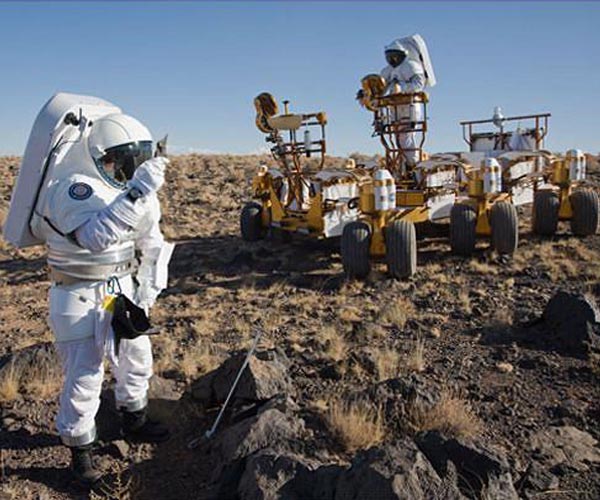Key technologies driving NASA’s Mars exploration discussed at conference
by Clarence Oxford
Los Angeles CA (SPX) Jul 24, 2024
NASA continues to advance the frontiers of space exploration with its Mars mission. At a recent Mars conference, ten groundbreaking technologies were highlighted, each playing a crucial role in the future of Mars exploration.
One of the standout innovations is the Mars Helicopter, named Ingenuity. Weighing just 1.8 kg, Ingenuity has completed over 50 successful flights on Mars. These flights have demonstrated the feasibility of powered flight on another planet, showcasing how aerial vehicles can scout terrain, assist in navigation, and access hard-to-reach areas.
Another significant development is the Mars Oxygen In-Situ Resource Utilization Experiment, or MOXIE. This experiment has successfully generated oxygen from the Martian atmosphere, a critical step for supporting human life on Mars. MOXIE converts carbon dioxide from the Martian air into oxygen through solid oxide electrolysis, a process that has shown promising results in creating life-supporting and fuel-producing resources.
NASA’s ambitious Mars Sample Return mission aims to bring Martian samples back to Earth for detailed analysis. By collecting and returning these samples, scientists hope to gain unprecedented insights into Mars’ geology and potential for past life. This mission, involving the Perseverance rover, is set to revolutionize our understanding of the Red Planet.
The Perseverance rover itself is a marvel of modern engineering. Currently exploring Jezero Crater, Perseverance is on a mission to find signs of ancient life and gather samples for future return to Earth. Equipped with advanced scientific instruments, the rover is conducting thorough analyses of Martian soil and rocks while deploying the Ingenuity helicopter.
Integral to the Mars Sample Return mission is the Mars Ascent Vehicle (MAV), which will be the first rocket launched from Mars. The MAV will transport collected samples from the Martian surface to orbit, where they will be captured by an orbiter for the return journey to Earth. The engineering challenges presented by Mars’ thin atmosphere and gravity make this a landmark project.
Water ice is a crucial resource for future human missions, and the Ice Mapper mission aims to identify and measure its presence on Mars. Using an orbiter equipped with radar, this mission will detect subsurface ice deposits, providing essential data for planning human exploration and potential colonization.
Entry, Descent, and Landing (EDL) technologies are also being advanced to ensure the safe landing of larger payloads on Mars. These technologies include supersonic parachutes, retrorockets, and precision landing systems designed to navigate the thin Martian atmosphere and achieve accurate landings.
Innovative concepts for Mars habitats are in development to support astronauts during their stay on the Martian surface. These habitats are designed to be safe, comfortable, and sustainable, offering protection from radiation, extreme temperatures, and dust storms.
Communication between Mars and Earth is critical for mission success, and NASA is planning a new Mars Communications Relay Orbiter to enhance these links. This orbiter will ensure continuous data relay, facilitating the success and safety of future missions.
Lastly, the Mars Ice Home proposes a sustainable habitat made from Martian ice, offering self-sufficiency for future explorers. Ice is an excellent material for radiation protection, and this concept includes using Martian resources to build and maintain the habitat.
These technological advancements represent significant steps toward making human exploration and eventual colonization of Mars a reality. NASA’s dedication to innovation continues to push the boundaries of what is possible in space exploration.
Learn more about the technologies:
Mars Helicopter
MOXIE
Mars Sample Return
Perseverance Rover
Mars Ascent Vehicle
Ice Mapper
Entry, Descent, and Landing (EDL)
Mars Habitat
Mars Communications Relay Orbiter
Mars Ice Home
Related Links
NASA
Mars News and Information at MarsDaily.com
Lunar Dreams and more




